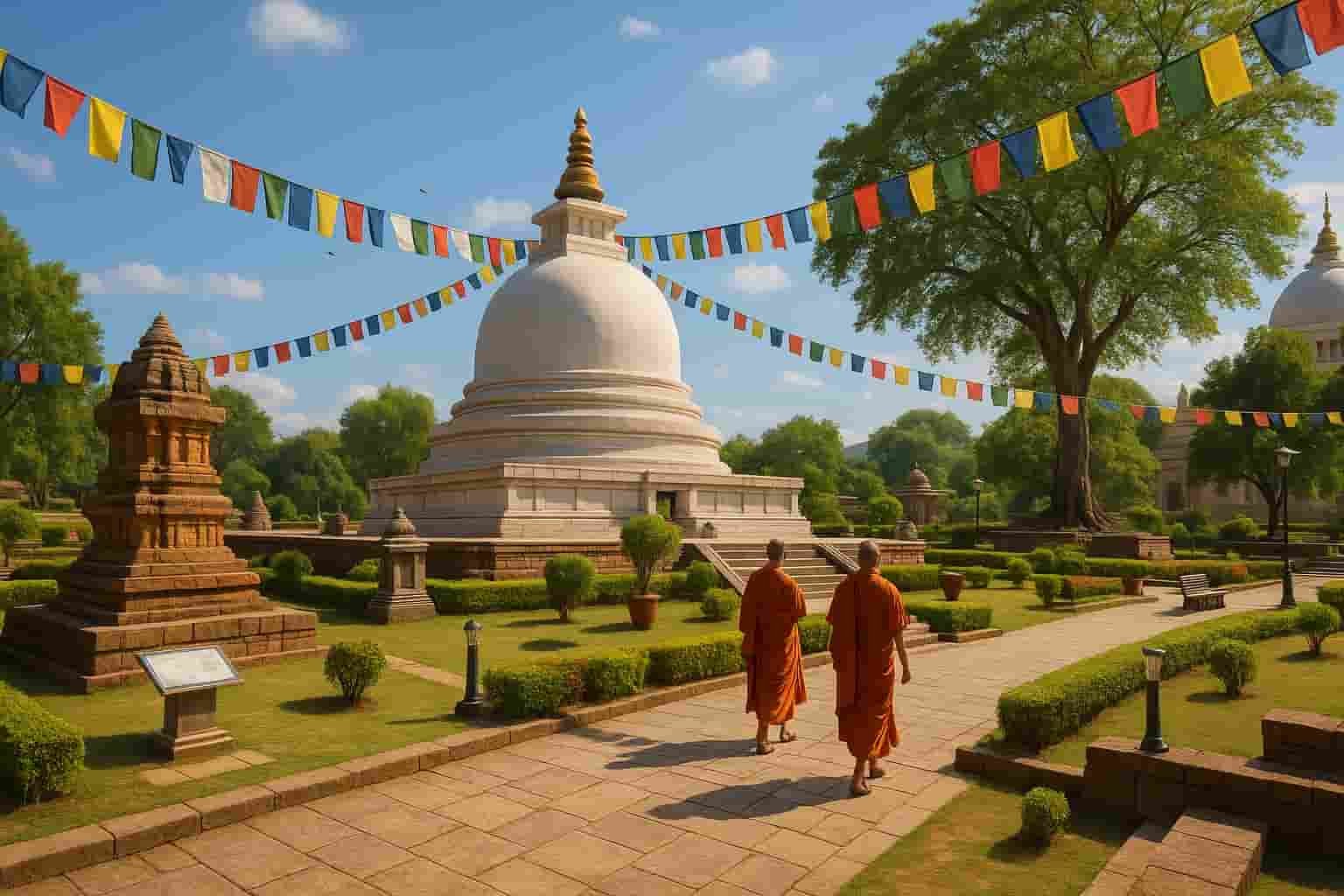
The spiritual landscape of India is witnessing a quiet revolution. While millions flock to the famous Buddhist circuit covering Bodh Gaya, Sarnath, and Kushinagar, something remarkable is happening along the eastern coast of Andhra Pradesh. The state’s ancient Buddhist heritage sites are finally getting the attention they deserve, and 2025 marks a turning point in how we experience India’s Buddhist history.
The Hidden Buddhist Treasure of Andhra Pradesh
Most people don’t realize that Andhra Pradesh was once the epicenter of Buddhist civilization in South India. Between the 3rd century BCE and the 3rd century CE, this region flourished as a major center of Buddhist learning and trade. Sites like Amaravati, Nagarjunakonda, Thotlakonda, and Bavikonda were bustling monasteries where monks from across Asia came to study and meditate.
For decades, these incredible sites remained largely forgotten. Overgrown with vegetation, poorly maintained, and barely promoted, they were known only to hardcore history enthusiasts and archaeology students. But that’s changing fast.
What’s New in 2025?
The transformation started quietly in late 2024, but this year has brought visible changes that are reshaping the Buddhist tourism landscape in Andhra Pradesh.
Digital Reconstruction and AR Experience
Walking through Thotlakonda today feels dramatically different than it did two years ago. The site, perched on a hilltop overlooking the Bay of Bengal, now features augmented reality stations. Visitors can point their smartphones at ruins and watch as the ancient monastery comes alive on their screens. You see monks walking through courtyards, hear the chanting that once echoed through these hills, and understand the layout of structures that are now just foundation stones.
This isn’t gimmicky technology for the sake of it. The digital reconstructions are based on years of archaeological research and help visitors genuinely understand what these spaces once looked like. For someone like me, who struggles to visualize historical sites, this has been transformative.
Improved Infrastructure and Connectivity
Let’s be honest – visiting these sites was previously a logistical nightmare. Poorly marked roads, lack of public transport, and minimal facilities made it accessible only to the most determined travelers. The 2025 makeover addresses these practical concerns head-on.
New highway connections now link the major Buddhist sites, cutting travel time significantly. Vijayawada to Amaravati, which used to take over an hour of frustrating traffic, is now a smooth 30-minute drive. Dedicated tourist buses connect the Buddhist circuit, making it possible to visit multiple sites in a single day without hiring private transport.
The sites themselves have received much-needed infrastructure upgrades. Clean restrooms, shaded seating areas, drinking water facilities, and small interpretation centers have appeared at most major locations. These might sound like basic amenities, but their absence was a major deterrent for families and older visitors.
The Amaravati Buddhist Heritage Project
The centerpiece of this transformation is the Amaravati Buddhist Heritage Project. The site, which was once the location of a magnificent stupa rivaling Sanchi in importance, is being developed as a world-class heritage destination.
What makes this project interesting is its focus on authenticity over spectacle. Rather than creating a theme park atmosphere, the development emphasizes education and preservation. The new Amaravati Heritage Center houses artifacts that were previously scattered across museums in Chennai and Kolkata, bringing them back to their place of origin.
The center’s exhibition design deserves special mention. It tells the story chronologically, starting with the Mauryan period and moving through the Satavahana dynasty’s golden age. Interactive displays explain the ancient Kharosthi and Brahmi scripts found on inscriptions, and there’s an entire section dedicated to the marble sculptures that made Amaravati famous in the art world.
Nagarjunakonda: The Island Museum
Nagarjunakonda has always been unique – it’s an island in the middle of Nagarjuna Sagar reservoir, accessible only by boat. This year, the ferry service has been upgraded with larger, safer boats running at regular intervals. The island museum has undergone complete renovation, with climate-controlled galleries protecting the priceless sculptures and relics discovered when the valley was flooded in the 1960s.
What struck me most during a recent visit was the new open-air exhibition area. Original structural remains have been reassembled here, giving you a sense of the scale and grandeur of the monasteries that once stood in this valley. Standing among these 1,700-year-old pillars and platforms, with the reservoir waters surrounding you, creates an almost meditative atmosphere.
Why This Matters for Buddhist Tourism
India’s Buddhist tourism has long been concentrated in the northern states, particularly Bihar and Uttar Pradesh. The Andhra Pradesh circuit offers something different – a coastal Buddhist heritage connected to maritime trade routes that linked India with Southeast Asia.
These sites tell stories that are missing from the mainstream Buddhist narrative. They show us how Buddhism wasn’t just a religious movement but a driving force in trade, art, and cultural exchange across the Indian Ocean. The sculptures found here influenced artistic traditions as far as Java and Cambodia.
For international Buddhist pilgrims, particularly from countries like Thailand, Myanmar, Sri Lanka, and Japan, the Andhra circuit is becoming an essential addition to their India itinerary. The improved facilities and interpretive materials make these sites accessible to visitors who might not have a background in Indian archaeology.
The Road Ahead
There’s still work to be done. Sites like Bavikonda and Salihundam need similar attention. Local guide training programs need to expand – good interpretation can make or break a heritage site experience. And there’s always the challenge of balancing tourism development with archaeological preservation.
But walking through these ancient monasteries in early 2025, watching young families explore ruins, seeing foreign pilgrims meditating in stupas, and listening to college students discuss Nagarjuna’s philosophy, I feel optimistic. These aren’t just stones and ruins anymore. They’re living connections to a fascinating chapter of Indian and Asian history.
The Buddhist trail in Andhra Pradesh is finally getting its moment. And if you’ve ever been curious about exploring India’s Buddhist heritage beyond the usual circuit, there’s never been a better time to visit.